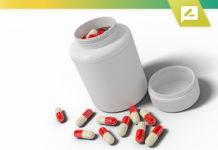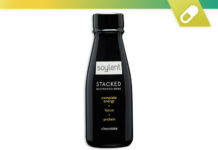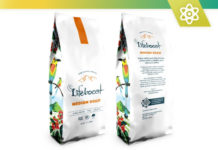Abstract
This study aimed to determine the impact of N-acetyl-glucosamine (GlcNAc) on the joint health of healthy people with no arthritic signs. A double-blind, randomized, placebo-controlled clinical trial was conducted to study the impact of the oral administration of a test supplement (low dosage, 500 mg/day, and high dose, 1000 mg/day) on the metabolism of cartilage in healthy people with a median age between 48.6+-1.3 years (range 23-64) by studying the ratio of degrading type II collagen to the synthesis of type II collagen using the type II collagen degrading (C2C) and synthesizing (PIICP) marker. The results showed that changes in the ratios between C2C and PIICP from baseline were reduced when the patients received low and high doses of GlcNAc compared to those who received a placebo at week 16 during treatment. To better understand the effects of GlcNAc in patients suffering from impairments in cartilage metabolism were analyzed. The change in C2C/PIICP ratios significantly decreased in groups receiving both high and low doses of GlcNAc after week 16. To exclude the effects of heavy physique weight and joint load, individuals weighing 70kg with reduced cartilage metabolic function were studied. It was evident that the changes in the ratios of C2C/PIICP were not observed in the groups that received high and low doses of GlcNAc between weeks 12 and 16. The absence of adverse events related to test supplements occurred during or following the treatment. In conjunction, these findings suggest that the oral administration of GlcNAc in doses between 500 mg and 1000 mg/day has a chondroprotective effect on healthy people by reducing the ratio of C2C/PIICP (relatively decreasing type II collagen degradation and stimulating the production of type II collagen) without revealing any negative consequences.
Introduction
The frequency and intensity of joint load are significant factors in the progression of joint damage. Osteoarthritis is caused by the gradual destruction of cartilage in articular joints. It is the most frequent joint disorder and is the primary cause of physical and mental impairment in older people. The knee joints are significantly affected by osteoarthritis because they are joints that bear weight. Studies that have examined osteoarthritis models for experimental research have revealed that beginning changes in the chemical and metabolic characteristics of the cartilage matrix could be identified before any radiological manifestations. Thus, various molecular markers have been identified to measure the metabolic rate of cartilage for patients suffering from joint disorders. Biomarkers are also used to assess the effects of drugs that treat diseases, as they are specifically able to detect changes in the process of metabolizing cartilage.
Type II collagen is among the main components of cartilage. It comprises 90-95 percent of the total collagen in cartilage. So, a few fragments from type II collagen are identified as biomarkers of cartilage metabolism. The C-terminal crosslinking protein II (CTX-II) is broken down during the degrading process of collagen type II, and a C2C-like neoepitope is produced by intrahelical cleavage of the C-terminus of the 3/4-inch piece of type II collagen that has been degraded. CTX-II and C2C can be used as markers of the degradation of type II collagen. Contrarily, C-terminal type I procollagen protein (CPII and PIICP), which is located in newly made type II collagen and is cleaved during the processing of synthesized type II procollagen, is an indicator of the synthesis of type II collagen.
The nutritional supplements include glucosamine and N-acetylglucosamine, as well as collagen. They are utilized for joint health to help treat or prevent the development of cartilage diseases such as osteoarthritis. Of these, glucosamine hinders the degradation process and stimulates the production of the distinctive glycosaminoglycan polysaccharide chains that comprise protege. Additionally, glucosamine reduces the expression of collagen-degrading enzymes like MMPs, or matrix metalloproteinases (MMPs), while enhancing collagen type II production in chondrocytes. Based on these findings, it has been suggested that glucosamine has a chondroprotective effect against cartilage disorders through the retention of proteoglycans as well as type II collagen in the cartilage of the articular, and it could be used to treat osteoarthritis in humans. An earlier study looked at glucosamine's effects on the cartilage's metabolic processes within healthy cyclists (mean age of twenty years old) who had normal cartilage metabolic function, according to the levels of CTX II and CPII. The results showed that oral glucosamine administration can have a chondroprotective effect on healthy people by stopping the degrading of type II collagen while sustaining the synthesis of type II collagen.
N-acetylglucosamine (GlcNAc), a glucosamine derivative, has been shown to increase hyaluronan production by increasing the expression of hyaluronan synthase-2 in chondrocytes. It also inhibits the interleukin (IL)-1b-mediated expression of inducible nitric oxygen (NO) synthase, cyclooxygenase-2, and IL-6 within chondrocytes. This suggests that GlcNAc has anti-inflammatory and chondroprotective effects in the case of cartilage disorders. In studies that have examined models of osteoarthritis in experimental studies, intra-articular injection of GlcNAc has been proven to have a chondroprotective effect. Furthermore, the consumption of a drink containing GlcNAc has been proven to increase the synthesis of collagen type II and alleviate the symptoms of people suffering from knee osteoarthritis. Thus, GlcNAc is believed to have an anti-chondroprotective effect on healthy people by enhancing cartilage metabolism.
To our knowledge, no prior studies have shown the impact of GlcNAc on metabolizing cartilage in healthy people. Thus, this study aims to evaluate the effects of GlcNAc on the joints of people who do not have symptoms of joint disorders. The impact from oral application of lower (500 mg/day) and high (1,000 mg/day) doses of GlcNAc on the cartilage metabolism for healthy adults of middle age (mean age,48.6+-1.3 years and a range of 23-64 years) by studying the ratio of collagen degradation type II to synthesis by using types II collagen degradation (C2C) and the synthesis (PIICP) indicators.
Materials and methods
Study design The current prospective, double-blind, randomized placebo-controlled parallel-group comparison study was planned to determine the impact of a GlcNAc-containing test product and placebo on the metabolism of cartilage (by way of proxy for collagen synthesis type II as well as degradation) in healthy people without any signs of joint disorders. The quality testing supplement's efficacy was examined. The study took place between January and August 2014 and involved three clinics that operate as clinical service organizations in Japan. The ethics council of local Tana Orthopedic Surgery endorsed the study protocol. It was carried out in compliance with the Declaration of Helsinki and the Ethical Guidelines for Epidemiological Research established 2008 by the Japanese Government in 2008. A written informed consent form was sought from each participant before they were enrolled in the research. The study's design included a run-in of a four-week (screening) period followed by a 16-week intervention, and a follow-up of 4 four-week periods was not influenced by the intervention. Subjects were screened to determine baseline values during the run-in, including a physical exam, a knee radiograph using a standard method, a symptom questionnaire, and routine tests in the laboratory. The medical exams and laboratory tests were conducted at the beginning of the intervention, weeks 4 8-12 and 16 of the intervention as well as 4 weeks following treatment for each of the participants.
Subjects excluded from the criteria were Gout/hyperuricemia or Rheumatoid Arthritis or surgical treatment for joint(s) or the necessity of it and a history of cartilage or bone disorders (including distortion and fracture) within a calendar year after enrollment the routine consumption of foods that contain the glucosamine, chondroitin sulfate and collagen peptides or other components that are present in this test product within three months of the date of enrollment and hypersensitivity or allergic reaction to any constituents in the supplement test prior or current medications for hypertension, malignancies, kidney diseases, cardiac disorders thyroid disorders or cerebral infarction injections of corticosteroids or hyaluronic acids within a year after enrollment; extreme exercise that involves excessive movement and exposure that puts stress on joints; drinking of more than 60 g alcohol per day pregnant women, mothers who are nursing or women with having child-bearing capacity during the time of study and participation in any different clinical trials within a month of enrolling and an occurrence of clinically significant medical condition that are deemed by the medical researcher to prevent participants from taking part in the current study.
By the guidelines laid out in the study, 75 male and female Japanese adults (mean years of life, 49.3+-1.3 years, range 23-64 years) with no radiographic or clinical signs of knee osteoarthritis (Kellgren or Lawrence grade 0-1, mostly zero) were considered participants. The subjects were randomly assigned to the high (n=25) and low (n=25) GlcNAc doses and other placebo (n=25) groups. However, during the intervention period, five subjects opted out of the study out of themselves or at the development of ulcerative colitis (placebo group 3, n=3; high-dose GlcNAc group with n=2). Thus, 70 participants completed the study. Five subjects were then removed from the review by the medical researcher because of treatment with antidepressants for depression conditions and anti-inflammatory medications for Achilles tendon and ankle pain, and an increased body mass (>4 pounds) during the time of intervention because these could influence the efficacy for the tested supplement (placebo group with n=2 and high dose GlcNAc, 3). So, 65 participants (mean of age 48.6+-1.3 years) in the placebo (n=20) or the low-dose GlcNAc (n=25) and high-dose GlcNAc (n=20) groups were able to participate in the evaluation of the effectiveness for the tested supplement.
Schematic flow diagram for the subjects that participated in the current study. GlcNAc, N-acetyl-glucosamine.
Simplified Presentation of Table I: Baseline Characteristics
- Age (years)
-
- Placebo: 48.8 +- 2.1
- low dose 48.0 + 2.2
- High Dose: 49.2 + 2.7
- P-value: 0.927
-
- Gender Distribution (Male/Female)
-
- Placebo: 10/10
- Lower dose 10/15
- The high dose 9/11
- P-value: 0.779
-
- Height (cm)
-
- Placebo: 164.33 +- 1.58
- Low Dose: 162.22 + 1.73
- High dose 163.51 + 2.04
- P-value: 0.695
-
- Weight (kg)
-
- Placebo: 57.68 +- 2.47
- low dose 57.48 + 2.36
- The high dose 62.39 + 2.87
- P-value: 0.327
-
- Body Mass Index (kg/m2)
-
- Placebo: 21.23 +- 0.66
- Low dose 21.63 + 0.56
- High dose 23.22 + 0.80
- P-value: 0.107
-
- Systolic Blood Pressure (mmHg)
-
- Placebo: 120.0 +- 3.1
- Low Dose: 110.2 + 2.0
- High dose 114.5 + 2.33
- P-value: 0.020 (significant)
-
- Diastolic Blood Pressure (mmHg)
-
- Placebo: 76.8 +- 2.1
- Low Dose: 71.7 + 1.5
- The high dose is 75.1 + 1.8
- P-value: 0.126
-
- Pulse Rate (beats/min)
-
- Placebo: 68.5 +- 2.0
- High dose 70.1 + 2.1
- The high dose 71.3 + 1.9
- P-value: 0.632
-
- Kellgren and Lawrence Grade (Right Knee)
-
- Placebo: 18:2
- High dose 22:3
- The high dose 18:2
- P-value: 1.000
-
- Kellgren and Lawrence Grade (Left Knee)
-
- Placebo: 18:2
- low dose 21:4
- High Dose: 18:2
- P-value: 0.803
-
- C2C (ng/ml) – Collagen Degradation Marker
-
- Placebo: 226.57 +- 11.08
- low dose 224.47 + 7.55
- High Dose: 226.08 + 9.07
- P-value: 0.985
-
- PIICP (ng/ml) – Collagen Synthesis Marker
-
- Placebo: 48.37 +- 2.25
- Low Dose: 48.47 + 1.99
- High Dose: 47.99 + 2.16
- P-value: 0.986
-
- C2C/PIICP Ratio
-
- Placebo: 4.89 +- 0.34
- Lower dose 4.87 + 0.29
- Dose high: 4.95 + 0.33
- P-value: 0.983
-
This format offers an easy and concise description of the fundamental characteristics of the study participants. It focuses on the distinctions between low-dose, placebo, and high-dose groupings that take GlcNAc test supplements.
The intervention and assignment of subjects test supplement was produced through Q'sai Co., Ltd (Fukuoka, Japan) in a powdered formulation containing 1,000 mg GlcNAc for the high dose group as well as 500 mg GlcNAc and 500 mg maltodextrin (vehicle) for the low dose group. The subjects were randomly assigned to either highest (1,000 mg GlcNAc) or low (500 mg GlcNAc ) and 500 mg maltodextrin) dosage GlcNAc group or to the placebo group (1,000 mg maltodextrin as a vehicle). All participants were required to consume either the supplement used in testing or the placebo (dissolved in 100 ml of water) every day, anytime during the day. The daily dosage of the test substance in the present study was determined based on the previous study's findings. The intervention continued for 16 weeks, and adherence to the intervention program was determined based on the consumption logs in the study diary; less than 80% compliance was considered a violation of protocol.
Serum and second-morning urine void samples were taken from people who were fasting at baseline, weeks 4, 8-12, and 16 during the intervention, and four weeks after the intervention. A portion of the serum and urine samples was kept at -80°C until needed, whereas the remaining aliquots of serum and urine samples were utilized immediately to perform regular laboratory testing.
Evaluation of the efficacy and safety to determine the impact of the GlcNAc test supplement on the metabolism of cartilage, serum samples from the time of baseline, weeks 12, and 16 during the intervention and four weeks after the intervention were analyzed using tests for the type II collagen degradation and synthesizing markers (C2C and PIICP respectively). Serum C2C as well as PIICP were determined with Collagen Type II Cleavege (IBEX Pharmaceuticals Inc., Montreal, Canada) and Procollagen II C-Terminal Propeptide (USCN Life Science Inc., Wuhan, China) ELISA kits, respectively. The C2C/PIICP ratio was calculated and then compared between the group of test supplements and the placebo.
Safety and tolerability were evaluated throughout the study based on the frequency and severity of the adverse events, abnormal changes in pulse rates and blood pressure, and laboratory tests, such as biochemical profiling, hematology, and urine urinalysis.
Statistics are calculated as the mean plus average error. Utilizing the essential characteristics of participants, the distribution of sex, Kellgren, and Lawrence grades were evaluated using the kh2 test. Other parameters were analyzed using single-way analyses of variance in the placebo, high, and low dosage GlcNAc tests supplement groups. Additionally, changes in the biomarker levels from baseline to after the intervention were compared between the high and low-dose GlcNAc supplementation groups and between the placebo or test supplementation groups with the test of Student's t. P<0.05 was considered to be the presence of a statistically significant distinction.
Results
Study groups: Characterization Table I provides the basic characteristics of the study group, which included 65 participants (placebo group 20; test supplement groups low dose GlcNAc 25 and high dose GlcNAc 20) that met the eligibility requirements and participated in the current study. The characteristics of the baseline included demographic characteristics (age and sexuality) and physiological parameters (body height as well as body weight, body mass index, diastolic and systolic blood pressures along with pulse rate) as well as the variations in Kellgren as well as Lawrence grades, as well as the levels of biomarkers that indicate the type II collagen metabolic process (C2C, PIICP, and C2C/PIICP ratio). The baseline characteristics were observed between the test supplement and placebo (low or high dosage GlcNAc, low and high dose) groups except for the systolic blood pressure. While the systolic blood pressures differed significantly among the two groups (P<0.05) however, they were within the range of normal (<130 millimeters). Adherence to the allotted diet supplement was higher than 96% for all those subjects (n=70).
Evaluation of cartilage metabolism with collagen degradation type II and synthesizers It is believed that the proportion of collagen type II degradation versus production is a good indicator for assessment of the rate of progression of joint damage in knee osteoarthritis patients. Thus, to test the effects of a GlcNAc-containing test supplement on cartilage metabolism, C2C/PIICP ratios were determined using serum samples taken at baseline, week 12, and 16 of intervention and then 4 weeks after. C2C/PIICP ratios reached their peak at 16 weeks of interventions in the control group as well as high doses of GlcNAc (P<0.05) and remained at a similar amount 4 weeks after the intervention (P<0.01). In contrast, C2C/PIICP ratios slowly increased in the low-dose GlcNAc group throughout the 16-week intervention and four weeks post-intervention (P<0.01 and 4 weeks following an intervention). There was, however, no significant difference between all three groups. After the intervention, C2C/PIICP ratios continued to be close to the same levels (P<0.01 in the ratios of C2C/PIICP in the high and low dosages of GlcNAc and the placebo group) 4 weeks following the intervention, when compared to baseline. In particular, the ratios of C2C/PIICP from baseline were dramatically decreased in the high and low-dosage GlcNAc testing supplementation groups (+0.81 and +0.97, respectively) in comparison to those in the placebo study group (+1.31) during week 16, in the course of the intervention. In addition, after 4 weeks of the intervention, the ratio of C2C/PIICP in those supplement groups (low and high dosage GlcNAc) was back to the same levels as those in the placebo.
C2C/PIICP ratios for subjects in the placebo and high and low dose GlcNAc test supplementation groups at the time of and after the intervention. (A) The PIICP and C2C were evaluated, and the C2C/PIICP ratios were calculated by analyzing serum samples from participants in the placebo (n=20 closed circle) or low (n=25 closed squares) and high (n=20 closed triangular) dose GlcNAc group at the beginning of the study, at weeks 8-12 and 16 during the intervention and four weeks after intervention. (B) Following that, the changes in the C2C/PIICP ratios over time from baseline were calculated and interpreted as a ratio of C2C/PIICP in the group of placebo (white) as well as the low (gray) or low (gray) and high (black) dosage GlcNAc groups at the beginning of the study, at weeks 8-12 and 16 during intervention and four weeks after intervention. Values are expressed as average + normal error average. *P<0.05 and **P<0.01 against. the baseline.
To better understand the effect of the GlcNAc-containing test supplements, those who had diminished cartilage metabolism were evaluated. In this regard, subjects who had diminished degradation of type II collagen (<220 mg/ml C2C) and a higher level of type II collagen synthesizing (>=60 ng/ml of PIICP) were excluded. Likewise, those with >220 ng/ml C2C and 60/ml PIICP were assessed. Table II outlines the characteristics typical of the subjects, including physical and demographic aspects, Kellgren and Lawrence grade distribution, and the levels of biomarkers used to measure the metabolism of type II collagen. In the groups of placebo (n=7) and the lower (n=12) or higher (n=10) dosage GlcNAc supplementation groups, the parameters did not differ significantly except for the systolic blood pressure. The ratios of C2C/PIICP were not significantly different between the three groups in interventions (16 weeks) and after the intervention (4 weeks). However, the ratio of C2C/PIICP was significantly reduced during week 12 of the intervention in the GlcNAc low-dose class (P<0.01). The C2C/PIICP ratios compared to the baseline were drastically reduced in the high and low levels of the GlcNAc group (week twelve, -0.79 in week 12, and -0.47 as well as week 16 -0.39 as well as +0.63) in comparison to those in the control group (week 12 -0.05 while week 16, +1.25). The ratios of C2C/PIICP in the supplementation groups tested returned to the same level that the placebo group had 4 weeks after the intervention.
C2C/PIICP ratios of subjects with >220 ng/ml C2C and 60 ng/ml of PPICP in the placebo as well as high and low dose GlcNAc supplementation group following and before intervention. (A) C2C, as well as PIICP, was evaluated. The ratios between C2C and PIICP were calculated by analyzing serum samples from subjects who were in the placebo (n=7 closed circle) or low (n=12 closed squares) and high (n=10 closed triangular) dose GlcNAc group at the beginning of the study, at weeks 12, and 16 during the intervention and 4 weeks following the intervention. (B) Then, the changes in the C2C/PIICP ratios compared to the baseline were calculated and interpreted as the ratio C2C/PIICP for the low (white) and high (white) as well as high (black) and low (gray) as well as higher (black) dosage GlcNAc groups at the baseline, weeks 12, and 16 during the intervention and four weeks following the intervention. The values are expressed as the mean plus the standard error. average. **P<0.01 vs. baseline.
Simplified Presentation of Table II Data
- Study Groups: Placebo (n=7), Low dose (n=12), High dose (n=10)
- Variables and Results:
- Ages (years): Placebo: 51.7+-3.8, Low dose: 46.5+-4.0, High dose: 50.0+-3.8, P-value: 0.647
- Genre (Male/Female): Placebo 4/3, Low dose: 3-9, High dose 5/5, P-value: 0.393
- The height (cm): Placebo: 165.39+-3.32, Low dose: 161.40+-2.52, High dose: 166.26+-2.86, P-value: 0.408
- (kg): Weight (kg): Placebo: 55.01+-3.72, Low dose: 58.68+-4.04, High dose: 60.79+-4.74, P-value: 0.689
- Human Mass Index (kg/m2): Placebo: 19.98+-0.77, Low dose: 22.25+-1.01, High dose: 21.71+-1.02, P-value: 0.318
- Systolic Blood Pressure (mmHg): Placebo: 122.9+-5.2, Low dose: 108.5+-2.8, High dose: 117.4+-3.5, P-value: 0.032
- Diastolic Blood Pressure (mmHg): Placebo: 77.9+-4.3, Low dose: 71.8+-2.0, High dose: 77.6+-2.5, P-value: 0.196
- Pulse Rate (beats/min): Placebo: 68.9+-2.4, Low dose: 68.1+-2.6, High dose: 73.4+-3.2, P-value: 0.356
- Kellgren as well as Lawrence Grade (Right Knee): Placebo: 7:0 Low dose: 11:1 High dose: 9-1 P-value: 1.000
- Kellgren as well as Lawrence Grade (Left Knee): Placebo: 7:0 Low dose: 10/2 High dose: 9:1 P-value: 0.770
- C2C (ng/ml): Placebo: 277.63+-16.09, Low dose: 249.77+-8.58, High dose: 255.79+-10.93, P-value: 0.248
- PiICP (ng/ml): Placebo: 46.43+-3.25, Low dose: 44.58+-2.45, High dose: 43.12+-1.66, P-value: 0.678
- C2C/PIICP ratio: Placebo: 6.16+-0.55 Low dose: 5.80+-0.37, High dose: 6.02+-0.35, P-value: 0.825
- Notes:
- A – Knee count
- b – Collagen degradation marker (C2C)
- c – Collagen synthesis marker (PIICP)
- GlcNAc – N-acetyl-glucosamine
- Important P-values (P<0.05) are highlighted in bold (only the systolic blood pressure demonstrated an important difference).
Notably, the shift in the ratios C2C/PIICP from baseline was significantly diminished in the GlcNAc low dose category (-0.79 and -0.39 and -0.39, respectively) when compared to the GlcNAc high dose group (-0.47 and +0.63 and +0.63 respectively) in week 12 and 16, of the intervention. This could be due to the different mean weights of the bodies between the two groups, as heavy body weight can put an additional burden on joints, which could affect the reaction of cartilage metabolism toward the supplement used in testing. Based on this theory, subjects more significant than 70 kg were ruled out, while those who weighed less than 70 kg were later assessed. Table III provides the essential characteristics of people who weighed less than 70 kg and had >220 C2C ng/ml and less than 60 mg PPIICP. There were no significant differences in the physical and demographic aspects, Kellgren and Lawrence grade distribution, and levels of biomarkers used to measure the type II collagen metabolic process were found in groups of placebo (n=7) as well as test supplements (low dose GlcNAc, n=10; and high dose GlcNAc, 7) groups and the other groups, except C2C and systolic blood pressure.
Below is an encapsulated format of Table III in bullet form:
- Study Group subjects weighing less than 70 kg, with >220 ng/ml C2C, and 60 mg the PIICP
- Therapies: Placebo, Low dose GlcNAc, and High dose GlcNAc
Variables and Results:
- Ages (years):
- Placebo: 51.7+-3.8
- The low dose is 44.1+-4.3
- The high dose is 48.9+-5.1
- P-value: 0.472
- Gender Ratio (Male/Female):
- Placebo: 4/3
- Low dose 2/8
- High dose 2/5
- P-value: 0.319
- Height (cm):
- Placebo: 165.39+-3.32
- The low dose is 159.53+-2.64
- The highest dose is 161.51+-2.24
- P-value: 0.337
- Weight (kg):
- Placebo: 55.01+-3.72
- Lower dose 54.29+-3.28
- Dose high: 51.91+-1.65
- P-value: 0.791
- Body Mass Index (kg/m2):
- Placebo: 19.98+-0.77
- Lower dose 21.16+-0.80
- Dose high: 19.91+-0.54
- P-value: 0.400
- Systolic Blood Pressure (mmHg):
- Placebo: 122.9+-5.2
- Lower dose 106.3+-2.3
- The high dose is 114.7+-3.9
- P-value: 0.013 (significant)
- Diastolic Blood Pressure (mmHg):
- Placebo: 77.9+-4.3
- The low dose is 69.7+-1.7
- The high dose is 75.4+-3.2
- P-value: 0.139
- Pulse Rate (beats/min):
- Placebo: 68.9+-2.4
- The low dose is 69.6+-2.8
- High dose 77.3+-2.8
- P-value: 0.100
- Kellgren and Lawrence Grade (Right Knee):
- Placebo: 7:0
- Low dose: 9:1.
- High dose: 6:1.
- P-value: 1.000
- Kellgren and Lawrence Grade (Left Knee):
- Placebo: 7:0
- Low dose: 8:2.
- High dose: 7:1.
- P-value: 0.315
- C2C (ng/ml)
(Collagen Degradation Marker):- Placebo: 277.63+-16.09
- The low dose is 238.62+-5.00
- The high dose is 258.00+-11.63
- P-value: 0.048 (significant)
- PIICP (ng/ml)
(Collagen Synthesis Marker):- Placebo: 46.43+-3.25
- Lower dose 44.23+-2.95
- The high dose is 42.73+-2.14
- P-value: 0.702
- C2C/PIICP Ratio:
- Placebo: 6.16+-0.55
- Dose low: 5.64+-0.43
- The high dose is 6.13+-0.41
- P-value: 0.654
Values are reported as a mean + average error. Important P-values (<0.05) are highlighted.
The ratios of C2C/PIICP weren't significantly different between the three groups in interventions (16 weeks) and following treatment (4 weeks). However, the ratio of C2C/PIICP significantly reduced at week 12 following interventions in the low-dose GlcNAc groups (P<0.01). The C2C/PIICP ratios at baseline were also reduced in the high and low levels of the GlcNAc group (week twelve, -0.83 as well as -0.98, respectively; week 16 -0.43 and -0.05 and -0.05, respectively) when compared to that of the group with a placebo (week 12. -0.05 while week 16 +1.25). The C2C/PIICP ratios within the tested supplementation groups were back to the same levels the placebo group had 4 weeks after the intervention.
C2C/PIICP proportions of people weighing less than 70 kg, with >220 mg C2C and 60 mg of PIICP within the placebo and high and low dose GlcNAc supplementation groups during and after the intervention. (A) C2C as well as PIICP were evaluated, and the C2C/PIICP ratios were determined using serum samples taken from participants in the placebo (n=7 closed circular shapes) as well as low (n=10 closed squares) and high (n=7 closed triangular) dose GlcNAc group at baseline, week 8-12 and 16 in intervention, and four weeks following intervention. (B) Then, the changes in the C2C/PIICP ratios over time from the beginning of the study were calculated and interpreted as a ratio of C2C/PIICP in the group of placebo (white) as well as high (black) and low (gray) or higher (black) levels of GlcNAc groups at the beginning of the study, at weeks 12, and 16 during the intervention and four weeks after intervention. The values are expressed as the mean minus the average of the average. **P<0.01 against. the baseline
The results suggest that orally administered test supplements, which contained both high and low doses of GlcNAc, showed the ability to protect cartilage metabolism in healthy people with no signs of joint pain by improving the ratio of C2C/PIICP (relatively decreased type II degradation and increased synthesis of type II collagen).
Evaluation of safety and tolerability In the 75 subjects who were who were enrolled in the study, seven subjects (28 percent) in the low dose GlcNAc category (n=25) and eight subjects (32 percent) in the GlcNAc high dose group (n=25) as well as eight participants from the group of placebo (n=25) had at least one adverse event during the time of intervention. The adverse events reported included eight incidents in the GlcNAc low dose group, while 31 were reported in the GlcNAc high dose group, and 18 were reported in the control group. No significant differences in the incidence of adverse events were found between all three categories. Acute adverse events reported by participants in the study mostly involved respiratory manifestations (sore throat or cough, rhinorrhoea, and fever), joint discomfort (shoulder or elbow), and neck stiffness. Each adverse incident was moderate intensity and was evaluated to be mild by an uninvolved medical researcher blinded by the treatment.
There were also no significant differences between physical measurements (body size and mass index), physiological examinations (systolic and diastolic blood pressures and pulse rate), and laboratory tests (urinalysis, hematology, and blood chemical analysis) between baseline and during and following the treatment in all three groups.
Discussion
The evidence suggests that biomarkers of cartilage metabolism and, specifically, type II collagen metabolism could be used to identify individuals at risk of joint damage and monitor the effects of modifying substances or treatments on osteoarthritis. For instance, studies in the past have shown the effectiveness of collagen degradation biomarkers of type II, such as CTX-II and C2C, to assess the effects of chondroprotective drugs like glucosamine or chondroitin Sulfate. In the following, type II collagen biomarkers like CPII (PIICP) are known to be used either on their own or in conjunction with the type II collagen biomarkers (CTX-II and C2C) to track the progression and severity of osteoarthritis. The ratio of type II collagen degradation versus synthesizing has been proven more efficient than analyzing one biomarker to monitor the impact of chondroprotective agents. Based on these results, the current study, to determine the effects on the effects of GlcNAc joint health and function of healthy individuals with no signs of arthritis randomized double-blind, placebo-controlled clinical trial was conducted to study the impact on joint health of people who take GlcNAc consumption (low dose 500 mg/day, and high dose, 1000 mg/day) on the metabolic rate of cartilage within healthy, middle-aged people orally (mean of age: 48.6+-1.3 years) by studying the ratio of degrading type II collagen to synthesis by using the degradation of type II collagen (C2C) and the synthesis (PIICP) indicators.
The results showed that changes in the ratios of C2C/PIICP from baseline were diminished in the high and low-dose GlcNAc group (+0.81 and +0.97 and +0.97, respectively) in comparison to those in the placebo one (+1.31) in week 16, of the intervention. The ratios of C2C/PIICP for the supplement test groups returned to the same ratio that the placebo group had 4 weeks following the intervention. To further understand the impact of the GlcNAc-based Test supplementation, individuals suffering from impairments in cartilage metabolism (>=220 C2C ng/ml and 60 mg/ml PIP) were assessed. The ratios of C2C/PIICP that changed from the baseline levels were dramatically reduced in the high and low levels of GlcNAc classes (week twelve and -0.79 in week 12, and -0.47 and week 16 -0.39 and +0.63 in both weeks, respectively) when compared to that of the group with a placebo (week 12 -0.05 as well as week 16 +1.25). The ratios of C2C/PIICP for the supplement groups tested returned to the same level that the placebo group had 4 weeks after the intervention. To exclude the impact of weight on joints and joint loading, subjects with weights of less than 220 C2C ng/ml and less than 60 ng/ml PPICP were studied. The changes in the ratios C2C/PIICP compared to the baseline were significantly reduced in the high and low levels of GlcNAc group (week 12 and week 16, -0.83 as well as -0.98 weeks 16 -0.43 and -0.05 respectively) when compared to those in the placebo study (week 12. -0.05 or week 16, +1.25) in addition to C2C/PIICP ratios within the supplement test groups returned to the same ratio as in the placebo group 4 weeks after the intervention. Furthermore, none of the test supplement-related adverse events were reported during or after the treatment. In conclusion, these results suggest that the oral administration of GlcNAc in doses between 500 mg and 1,000 mg daily can have a chondroprotective effect in healthy people without apparent adverse effects through decreasing the ratio C2C/PIICP (relatively decreasing degradation of type II and stimulating collagen synthesis in type II) and enhancing cartilage metabolism. However, the effect is reversible and disappears upon discontinuation of the treatment.
The mechanism through which the GlcNAc-containing test supplements exert an effect of protection on cartilage metabolism has yet to be uncovered. In this regard, it is fascinating to consider that GlcNAc increases hyaluronan production through the increased expression of hyaluronan synthase-2 in the chondrocytes. Hyaluronan has been reported to inhibit the expression of MMP-13 by IL-1b through its primary receptor CD44, a signaling mechanism for p38 mitogen-activated protein Kinase (MAPK) in osteoarthritic chondrocytes. Hyaluronan also inhibits aggrecan degradation via a reduction in the IL-1a-induced expression of a disintegrin-and-metalloprotein with thrombospondin-related motif (ADAMTS)-4 which acts as an aggrecanase by CD44 signaling of osteoarthritic chondrocytes. Hyaluronan also blocks the induction of MMP-3 by IL-1b the MMP-13, ADAMTS-4, and 5 in osteoblasts. It is also noteworthy that GlcNAc blocks the IL-1b-mediated production of the inducible NO synthase and cyclooxygenase-2, and IL-6 through the inhibition of MAPKs such as c-jun N-terminal Kinase extracellular signal-related kinase, and p38MAPK activation within chondrocytes. Thus, GlcNAc can enhance cartilage metabolism by reducing the ratio of C2C/PIICP (relatively decreases the degradation of type II collagen and increasing the synthesis of type II collagen) because of its anti-inflammatory and chondroprotective properties due to the inhibition of enzymes that degrade cartilage like MMPs as well as ADAMTSs possibly through the production of Hyaluronan. However, a specific method of describing the mechanism by which GlcNAc affects cartilage metabolism through degradation of type II collagen and output is still to be determined.
The study was subject to limitations. The number of subjects who participated in the study was comparatively small and consequently, it was hard to determine significant differences between these three categories, specifically those who had poor cartilage metabolism were chosen and examined. In future studies, the number of subjects must be increased to demonstrate the potential of a supplement to boost cartilage metabolism in healthy people.
To our knowledge, this study was the first to examine the effects of oral GlcNAc administration on the metabolism of cartilage in healthy people. It has been proven that intra-articular injections of GlcNAc have a chondroprotective effect on osteoarthritis models in experimental studies, and the administration of a drink containing GlcNAc reduced the symptoms of people with knee osteoarthritis, in an earlier study, possibly through increasing the synthesis of type II collagen and decreasing the ratio of CTX-II/CPII. The effectiveness and safety of GlcNAc, as demonstrated in the current study, suggest that this GlcNAc-containing supplement is safe for use because it has the potential to exert a chondroprotective effect in healthy individuals by increasing the collagen metabolism of type II within the cartilage without causing negative consequences. So, GlcNAc supplements could be a candidate for improving joint health for healthy people with no arthritic signs.













![Bowflex Max Total: 2024 Fitness Workout Exercise Machine [Review] Bowflex Max Total: 2020 Equipment Review For Complete Upper and Lower Body Workout](https://www.advancedliving.com/wp-content/uploads/2019/12/Bowflex-Max-Total-218x150.jpg)


